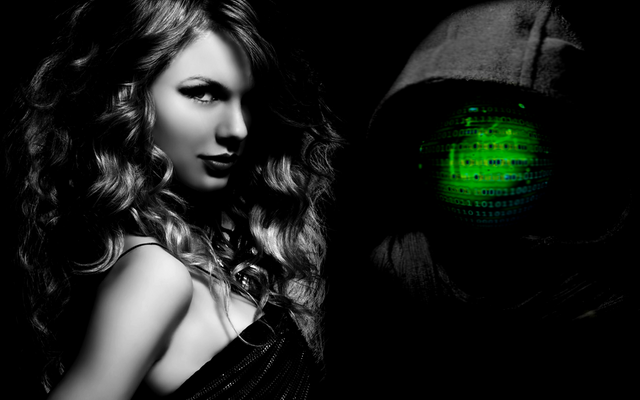Why hacks are scarier than dating Taylor Swift

Imagine yourself as Taylor Swift’s boyfriend for a second. Chances are, you’d find yourself balancing between the joy of yesterday and the uncertainty of tomorrow. The world witnessed Taylor’s evolution from her beginnings with Joe Jonas down to her recent stint with Tom Hiddleston last year. Online magazine MarieClaire.com even wrote a timeline of her boyfriend chapters in between. Swift, evolving, and unpredictable – like Taylor, that’s exactly how hackers move from all corners of the cyber universe. Hacks can happen anytime and can affect just about anyone. Contrary to popular belief, hacking is not something new. It dates back its origins to the 1960’s down to the current digital age where hacking happens on a daily basis.
Image from web.mit.edu
White hat origins
Hacking traces its roots back in the 1960’s where people at MIT tried creating simple shortcuts in order to bypass complex systems and improve operations. These hacks were made to improve efficiency and delivery.
Image from instructables.com
Free calls
In 1971, John Draper came up with the blue box – an improvised device designed to emulate the in-band signaling system that is used in making long-distance calls. This resulted to a lot of people using the device to make free calls.
Image from steapasideshow.com
Consolidation and regulation
By the 1980s, the Chaos Computer Club, Europe’s largest association of hackers was formed. The decade also saw the origins of US federal regulation through the implementation of the Computer Fraud and Abuse Act in 1986. Subsequently, Robert Morris developed the Morris Worm which was the first computer worm on the internet. He also became the first person to be convicted under the Computer Fraud and Abuse Act towards the end of the decade.
The start of a multi-billion criminal digital business
The turn of the 21st century proved to be an era of cyber crime proliferation. With the introduction of the internet to the general public, criminals started to come up with ways to prey on innocent digital users. In 1994, Vladimir Levin was able to access Citibank customers’ accounts by tapping into the company’s wire transfer service. He was able to obtain around $10 million from the hack.
Image from brandsoftheworld.com
In 1997, hacking program AOHell massively hits America’s largest messaging program, AOL. This caused users to be kicked out of chat rooms and signed off from their accounts. In 2004, AOL employee Jason Smathers steals 92 million names and email addresses of customers and sold them to spammers which caused over 7 billion unsolicited emails.
In 2007, hacking goes to mobile as George Hotz becomes the first person to jailbreak an iPhone making the device usable with other telecom carriers.
Towards the following decade, the hacking industry saw scalable evolution as proponents turned into large groups such as LulzSec and Anonymous targeting bigger enterprises such as Sony, Yahoo, and MySpace. Currently, data breaches and leaks happen daily and cover both businesses and consumers.
What do they do with your information
They access them directly and make purchases.
This is especially true for credit card information. Once they obtain your credit card details, it will be easy for them to use it to make a purchase online.
Image from lmgsecurity.com
They sell it to other people.
One way of taking away dirt from your hands is to pass it off to other people. Based on what I’ve seen over the clear web and the dark web, cyber criminals have been selling these accounts to monetize the data they have stolen.
Image from marketingland.com
They sell it to marketing companies.
Have you ever wondered why so much unsolicited emails fill up your email account? Hackers who obtain your email address monetize themselves by selling it to marketing companies. In turn, these marketing companies sell your email addresses to individual businesses as customer leads for them to send email campaigns to.
They steal your identity.
One of the most horrific things that can happen to you is to have someone else steal your identity. Imagine your name and your image being used online to deceive people. By the time you know it, you’ve already earned a bad reputation and have creditors running after you with the worst credit score of your life!
In conclusion
As swift as Taylor, hacks can happen anytime and anywhere. In the current state of how digitally connected everyone is, your next heartbreak might be lurking right around the corner. The best way to secure yourself is to prepare and protect. Don’t wait to be a victim. Rather, have the best defense ahead for a weaker offense.
Cheers,
thejohnpinto
I really admire how you have elaborated all important things for privacy which most people don't know about. Keep up the good work.
Thanks! I really appreciate it.
You are always welcome :)
thanks for sharing keep it up
Thanks! :-)
Congratulations @thejohnpinto! You have completed some achievement on Steemit and have been rewarded with new badge(s) :
Click on any badge to view your own Board of Honor on SteemitBoard.
For more information about SteemitBoard, click here
If you no longer want to receive notifications, reply to this comment with the word
STOPCongratulations @thejohnpinto! You have completed some achievement on Steemit and have been rewarded with new badge(s) :
Click on any badge to view your own Board of Honor on SteemitBoard.
For more information about SteemitBoard, click here
If you no longer want to receive notifications, reply to this comment with the word
STOP